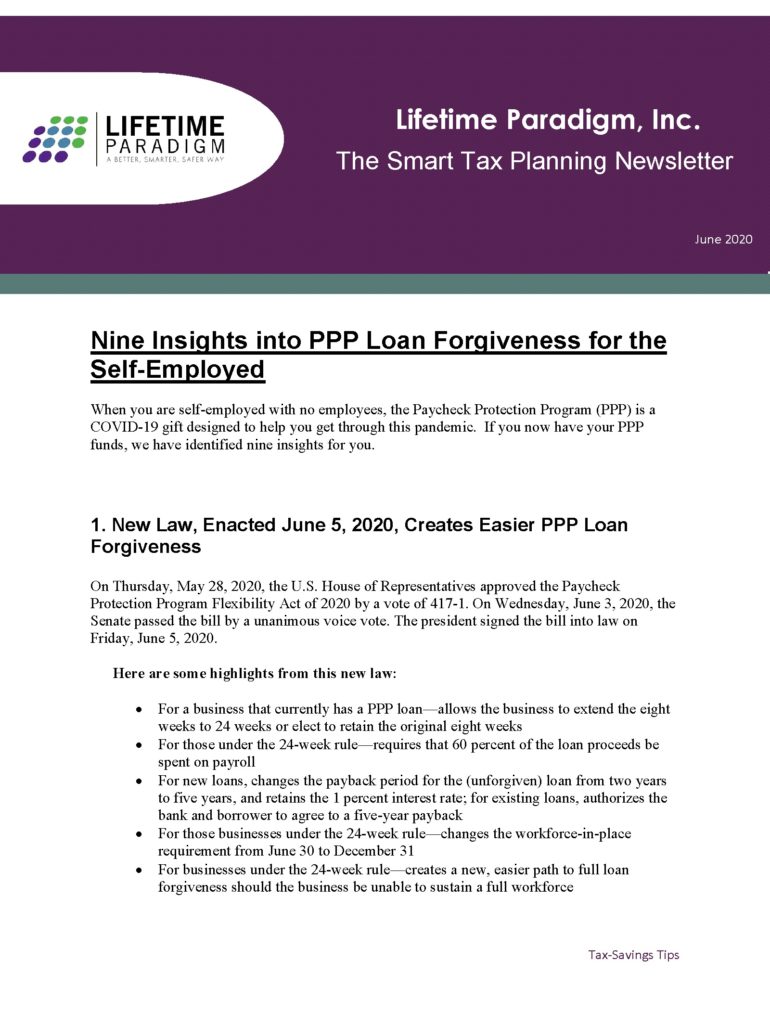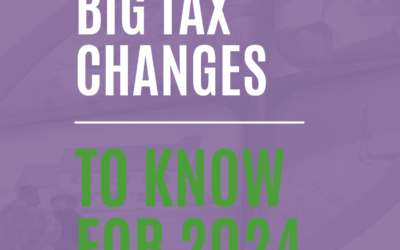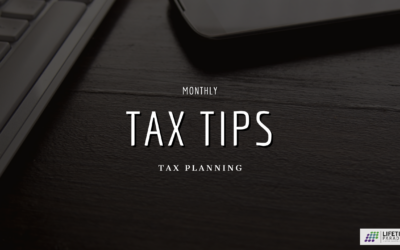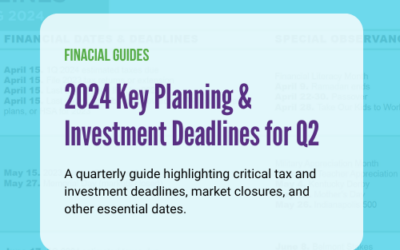The Smart Tax Planning Newsletter
Every month we provide you with a fairly detailed review of several important Tax Topics. Scan through the highlighted topics noted below.
This Month’s Edition Includes:
- Nine Insights into PPP Loan Forgiveness for the Self-Employed
- Four Insights into the PPP for Partnerships
- Create Deductions: Use Your Vacation Home for Business Lodging
- COVID-19 Relief if You Work Abroad or Travel to the U.S. to Work
Nine Insights into PPP Loan Forgiveness for the Self-Employed
When you are self-employed with no employees, the Paycheck Protection Program (PPP) is a COVID-19 gift designed to help you get through this pandemic. If you now have your PPP funds, we have identified nine insights for you.
1. New Law, Enacted June 5, 2020, Creates Easier PPP Loan Forgiveness
On Thursday, May 28, 2020, the U.S. House of Representatives approved the Paycheck Protection Program Flexibility Act of 2020 by a vote of 417-1. On Wednesday, June 3, 2020, the Senate passed the bill by a unanimous voice vote. The president signed the bill into law on Friday, June 5, 2020.
Here are some highlights from this new law:
- For a business that currently has a PPP loan—allows the business to extend the eight weeks to 24 weeks or elect to retain the original eight weeks
- For those under the 24-week rule—requires that 60 percent of the loan proceeds be spent on payroll
- For new loans, changes the payback period for the (unforgiven) loan from two years to five years, and retains the 1 percent interest rate; for existing loans, authorizes the bank and borrower to agree to a five-year payback
- For those businesses under the 24-week rule—changes the workforce-in-place requirement from June 30 to December 31
- For businesses under the 24-week rule—creates a new, easier path to full loan forgiveness should the business be unable to sustain a full workforce
- The remaining insights into the eight-week rules give you (as a Schedule C taxpayer) the runway that applies to both the eight-week and 24-week rules.
2. Do I Have to Spend the PPP Loan Proceeds?
Yes, it appears so. The instructions for line 9 of Schedule A for the U.S. Small Business Administration’s (SBA) Form 3508 PPP loan forgiveness application state:
Line 9: Enter any amounts paid to owners (owner-employees, a self-employed individual, or general partners). This amount is capped at $15,385 (the eight-week equivalent of $100,000 per year) for each individual or the eight-week equivalent of their applicable compensation in 2019, whichever is lower.
Note the word “paid.”
Example. Sam shows 2019 Schedule C net profits of $100,000 and obtains a PPP loan of $20,833. By the SBA interim final rule, his payroll forgiveness amount is $15,385 based solely on his 2019 Schedule C.
Sam maintains both business and personal bank accounts. Sam deposits the $20,833 into his business account. During Sam’s eight-week covered period, he takes $15,385 out of his business account and puts it in his personal account. Presto, he has satisfied the “paid” requirement that you see on line 9 of the loan forgiveness application.
We don’t know that Sam had to satisfy the “paid” requirement of line 9, but we do know that Sam can sleep better now.
3. Should I Put the Loan Proceeds in a Separate Bank Account?
With a separate bank account from which you use the PPP loan proceeds, you can create an almost perfect paper trail as to the use of the proceeds. From a practical standpoint, however, you should be able to use your existing accounting methods to prove the use of the PPP loan proceeds.
4. When Do My Eight Weeks Begin?
According to the latest interim guidance and consistent with SBA Form 3508, with no employees, your eight weeks begin on the date the lender disburses the funds to you. You would have an alternate date possibility if you had employees on a W-2 payroll.
5. Can I Claim Forgiveness for the Business Interest and Utilities Percentage I Pay for My Home Office?
Yes. When you claim the home-office deduction on your Schedule C, it reduces the net profits from your business. In other words, the home-office deduction is a business deduction.
Under the current loan forgiveness rules, your non-payroll PPP loan forgiveness amount (limited to a maximum of 25 percent of total forgiveness) may include any or all of the following during your eight-week covered period:
- interest payments on any business mortgage obligation on real or personal property where such obligation was in place before February 15, 2020 (but not any prepayment or payment of principal)
- payments on business rent obligations on real or personal property under lease agreements in force before February 15, 2020
- business utility payments for the distribution of electricity, gas, water, transportation, telephone, or internet access for which service began before February 15, 2020
To put this in perspective, you need both the home (rented or owned) and the home office in place before February 15, 2020.
6. What Is a Transportation Utility?
We have not seen from the SBA or the Department of the Treasury an official definition of a “transportation utility” with respect to the PPP loan process. The Federal Highway Administration’s Center for Innovative Finance Support says:
Transportation utility fees are a financing mechanism that treats the transportation system like a utility in which residents and businesses pay fees based on their use of the transportation system rather than taxes based on the value of property they occupy.
7. How Does the 75 Percent Work?
When you file Schedule C and have no employees, your minimum loan forgiveness amount under the 75 percent rule is straightforward. Take your payroll amount and divide by 0.75.
Example. Your PPP loan is $20,833. Your deemed Schedule C payroll to yourself is $15,385.
- Your maximum loan forgiveness amount is $15,385 divided by 0.75, or $20,513.
- Your minimum loan forgiveness amount is the 2019 Schedule C payroll component of $15,385, assuming you meet the paid rule as explained above.
Say you meet the paid rule and spend $4,000 on interest and utilities; your loan forgiveness amount is $19,385 ($15,385 + $4,000). You can let the unforgiven $1,448 ($20,833 – $19,385) continue as a 1 percent interest loan for two years from the date of the loan, or you can pay it off during this time frame with no prepayment penalties.
8. What If I Have Employees?
With employees, the calculation of how you qualify for your personal portion of loan forgiveness is unchanged. But, you have to make a number of calculations to figure the forgiveness you receive because of your employees.
9. PPP Money Still Available; Apply Now
As of 5:00 p.m. eastern time on Friday, May 29, the SBA had approved 4.3 million PPP loans totaling $510.2 billion. The Journal of Accountancy reports that a total of $138 billion remained available in PPP funding as of May 23. That means there likely is money available today. If you have not applied, do it now.
Four Insights into the PPP for Partnerships
The PPP free-cash program to assist businesses during the COVID-19 pandemic is gaining traction and clarity. If you operate your business as a partnership, several recent developments have made the free-cash program more to your benefit.
1. Partner’s Self-Employment Income Creates Cash and Forgiveness
Just as sole proprietors failed originally to ask for their PPP cash assistance, so did many partners. Three things to note here:
- The partnership (not the individual partner) applies for the PPP loan.
- The deemed payroll amount that the partnership uses for the partners is their 2019 self-employment income (both guaranteed payments and ordinary income).
- If the partnership filed for the PPP loan based on its employees, but failed to include any dollar amount for the partners, the (SBA) in an interim final rule authorizes the lender to increase the loan amount for the appropriate partners’ deemed payroll inclusion that was left out of the original application.
2. Paid and Capped
Line 9 of the SBA official loan forgiveness application reads as below:
Line 9: Enter any amounts paid to owners (owner-employees, a self-employed individual, or general partners). This amount is capped at $15,385 (the eight-week equivalent of $100,000 per year) for each individual or the eight-week equivalent of their applicable compensation in 2019, whichever is lower.
Note the word “paid.” In general, payments to partners don’t occur in a pattern that would equal the amount needed during the eight-week covered period. To protect the partnership’s forgiveness amount, make sure that payments to partners during the eight-week covered period equal the 8/52 of the partners’ deemed 2019 payroll. We have not seen a requirement on the “paid” part, but that word is there. So protect yourself.
Note. The newly enacted Paycheck Protection Program Flexibility Act of 2020 allows you to stay with the eight-week program or elect use of the new 24-week program as explained earlier.
3. Qualifying Non-Payroll Expenses
When explaining that the partnership had to file for the PPP loan and forgiveness, the SBA stated:
Rent, mortgage interest, utilities, and other debt service are generally incurred at the partnership level, not partner level, so it is most natural to provide the funds for these expenses to the partnership, not individual partners.
4. Apply
If your partnership has not applied for its PPP money, do it now. The SBA has plenty of money available for PPP loans at the moment, but you have to think it won’t last long.
Create Deductions: Use Your Vacation Home for Business Lodging
Here’s good news: the properly used business vacation home or condo does not suffer from
- the vacation-home rules,
- the passive-loss rules, or
- the entertainment-facility rules.
In these days of COVID-19, you may have solid reasons to use your vacation home or condo for two purposes only, which are
- personal pleasure, and
- business lodging.
How Business Use Escapes the Dreaded Vacation-Home Rules
Do you use your business vacation home or condo solely for business lodging? If so, you escape the vacation-home rules and may deduct your business-lodging costs. The law is very clear on this. The vacation-home section of the tax law, Section 280A(f)(4), states that nothing in the vacation-home rules shall disallow any business deduction for business travel.
Example 1. You use your beach home for overnight business lodging 37 times during the year. You have no personal or rental use of the beach home. Your beach home is a 100 percent business asset and deductible as such.
One exception to this business-lodging rule. The law does not grant the business-lodging exception to landlords who rent dwelling units. If you have apartment buildings or other residential rentals, staying at your vacation home or condo to look after your rentals does not let you escape the unfavorable vacation-home rules.
Example 2. Fred uses his beach home for 70 nights of business lodging and 30 nights of personal lodging. He has a 70 percent business-use beach home and a 30 percent personal-use beach home.
Planning note. Fred has his tax home where he regularly works, in New Jersey. He travels to his South Carolina beach home location to conduct business in South Carolina. His business activity is what makes his overnight stays at the beach home business stays.
How Rental Use Changes the Landscape
If you rent the vacation home or condo, you really change the tax picture. For example, if you use the vacation home or condo for personal, business, and rental purposes, you could trigger
- vacation-home rules that require a split between the rental- and personal-use deductions;
- vacation-home rules that classify the rental part of your property as either a personal residence or a rental property;
- loss of tax-favored hotel status for qualified rentals; and
- passive-loss rules that defer current tax benefits to future years.
Looking at this list, you might ask, “How can I avoid all these additional considerations and still rent out the vacation home or condo?” Answer: rent for 14 days or less. Technically, that works.
Build Proof
In addition to keeping receipts for the business condo’s expenses and improvements, you need to prove how many nights you slept in the vacation home or condo for both business and personal purposes. Notations on your business and personal calendars are helpful but not conclusive. For your business activities, you want proof of why you had to be at the beach home.
Example 3. Sara sells real estate at both her tax and beach home locations. She tracks her prospects and activities at each location. Do as Sara does. Also, keep your eyes open for third-party and other corroborative evidence of use. Do you have emails, letters, and other proof of why you had to travel to the beach home? If so, print the emails and save them along with the written letters in your tax file.
Do you have evidence of being in the area, such as gas, grocery, and dining receipts? Proving use of your business condo is easy and takes very little time. Documentation is essential. Don’t pass over this critical step.
Ownership
Do you own the vacation home or condo in your personal name?
If so, and you operate as a:
- Proprietorship or LLC taxed as a proprietorship, no problem. Simply treat the business percentage as business expenses on your Schedule C.
- Corporation, submit an expense report to the corporation to obtain reimbursement.
Why not use a rental arrangement with your corporation? Because you are an employee who likely uses the vacation home or condo for more than 14 days of personal use, you want to avoid a rental arrangement that could cost you your depreciation, repairs, and similar deductions. The reimbursement method works and creates no complications. Use it.
If the corporation owns the vacation home or condo, you should reimburse the corporation for your personal use so as to avoid the monies showing on your W-2 and costing you payroll taxes.
COVID-19 Relief if You Work Abroad or Travel to the U.S. to Work
If the federal tax you pay is dependent on where you are physically located, then COVID-19 likely has thrown a wrench in your physical tax location (and tax situation).
If you were living abroad and had to return to the U.S. because of COVID-19, you may wonder if you’ll have a big tax bill for failing to meet the foreign earned income exclusion requirements.
If you are a non-resident alien who got stuck in the U.S. because of COVID-19, you may be worried that the IRS will consider you a U.S. resident for tax purposes—thereby allowing Uncle Sam to tax your worldwide income.
Here’s good news. The IRS has provided relief in both circumstances if you qualify.
Foreign Earned Income Exclusion
The tax law gives you a huge tax benefit if you live or work abroad, which allows you to exclude a significant amount of your income from federal tax. In 2020, the maximum exclusion is $107,600 per person plus an additional amount for foreign housing costs.
To claim the exclusion, you need
- foreign-sourced earned income,
- a foreign tax home, and
- to meet either the physical presence or the bona fide residence test.
You’ll still be a qualified individual for the foreign earned income exclusion if you had to leave the foreign country because of war, civil unrest, or similar adverse conditions that precluded the normal conduct of business.
Exclusion Relief
The IRS has ruled that COVID-19 is an adverse condition that precluded the normal conduct of business
- in the People’s Republic of China, excluding the Special Administrative Regions of Hong Kong and Macau (China), as of December 1, 2019, and
- globally, as of February 1, 2020.
To use this relief procedure, you had to
- establish residency, or be physically present, in the foreign country on or before the applicable date above, and
- reasonably expect to meet the foreign earned income exclusion requirements but for the COVID-19 pandemic.
The period covered by this relief ends on July 15, 2020.
Exclusion Relief Example
Joe is present in the United Kingdom from January 1, 2020, through March 1, 2020, and expected to work in London for all of calendar year 2020.
Due to COVID-19, Joe leaves the United Kingdom on March 2, 2020, then returns on August 24, 2020, and stays for the remainder of 2020.
Joe is a qualified individual for the foreign earned income exclusion for the following periods:
- January 1, 2020, through March 1, 2020, and
- August 25, 2020, through December 31, 2020.
Because Joe has 188 qualifying days in the calendar year period, his maximum foreign earned income exclusion in 2020 is $55,270.
U.S. Residency
If you are a citizen or resident of the United States, then you pay federal tax on your worldwide income.
If you are a non-resident alien, then you pay tax only on your U.S. source income. Therefore, if you aren’t a U.S. citizen or resident, but work occasionally in the U.S., you don’t want to become a U.S. resident for tax purposes.
If you are neither a U.S. citizen nor a lawful permanent resident, then you become a U.S. resident for tax purposes for a calendar year if you meet the substantial presence test in that calendar year.
To meet the substantial presence test for a calendar year, you would be present in the U.S. for at least
- 31 days in the current year, and
- 183 days over a three-year period, using the sum of days present in the current year, one-third of the days present in the first preceding year, and one-sixth of the days present in the second preceding year.
Therefore, if you work in the U.S., and couldn’t leave due to COVID-19, your worldwide income could be subject to U.S. tax.
You don’t count certain days toward the substantial presence test, including medical condition exception days, which are days in which you intended to leave the U.S. but were unable to do so because of a medical condition that arose while you were present in the U.S.
Residency Relief
If you intended to leave the U.S. during your COVID-19 emergency period, but you were unable to do so due to COVID-19 emergency travel disruptions, you can exclude the COVID-19 emergency period days from the substantial presence test.
Your COVID-19 emergency period is a single period of up to 60 consecutive calendar days that you select, starting on or after February 1, 2020, and on or before April 1, 2020, during which you were physically present in the United States for each day.
You qualify for this relief if
- you were not a U.S. resident at the close of the 2019 tax year;
- you are not a lawful permanent resident at any point in the 2020 tax year;
- you are physically present in the U.S. during your COVID-19 emergency period; and
- you don’t become a U.S. resident in 2020 due to days of your presence outside of your COVID-19 emergency period.
To claim your relief, you will either
- have to file a Form 1040-NR and complete a Form 8843 according to Revenue Procedure 2020-20, or
- not have to file a Form 1040-NR and simply retain appropriate records in case the IRS inquires.
Residency Relief Example
Martha arrived in the United States on August 14, 2019, and anticipated staying for work through March 31, 2020. With this schedule, she would not have met the substantial presence test in either 2019 or 2020.
But due to COVID-19, Martha did not leave the U.S. until May 26, 2020. Without relief, Martha would be a U.S. resident in calendar year 2020 with 192 days of presence:
- 146 days in 2020, and
- 46 days in 2019 (one-third of 139 days).
If Martha selects April 1, 2020, as the start of her COVID-19 emergency period, then she is not a U.S. resident in calendar year 2020 because she’ll have only 136 days of presence:
- 90 days in 2020, and
- 46 days in 2019 (one-third of 139 days).

Big Tax Changes to Know for 2024
Financial Guides2024 has brought some big tax changes with it. It’s essential to stay informed about these...
The Smart Tax Planning Newsletter March 2024
Tax PlanningIn This Issue: IRAs for Young Adults Get Up to $32,220 in Sick and Family Leave Tax Credits New Crypto Tax...
2024 Key Planning & Investment Deadlines for Q2
Financial GuidesSpring is coming and to keep you financially organized for Q2, we are providing you with our Spring...






